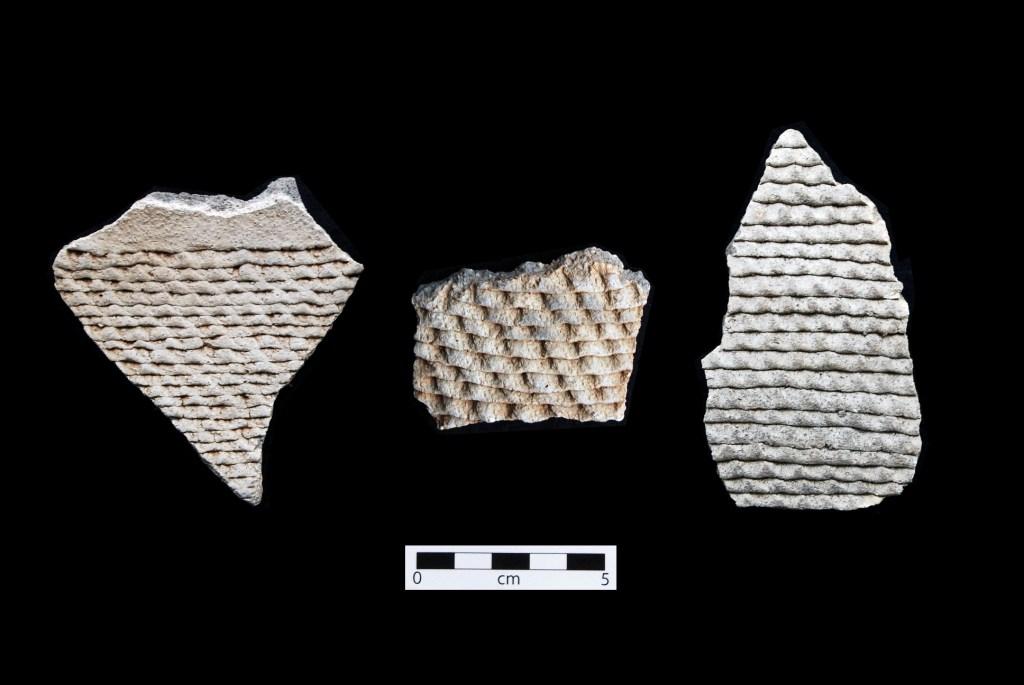Tusayan Corrugated is one of the most common types of Tusayan Gray Ware, with a geographical range including northeastern Arizona, northwestern New Mexico, and southern Utah.
Archaeological Culture: Ancestral Puebloan, Kayenta
Date Range: Kayenta Heartland: A.D. 1020-1210 (Christenson 1994), Flagstaff Area: A.D. 1050-1275 (per Christian Downum, Northern Arizona University).
Construction: By coiling.
Firing: In a reducing atmosphere.
Core Color: Light gray to dark gray; sometimes almost black.
Temper: Abundant moderately coarse quartz sand; temper fairly conspicuous on both surfaces.
Surface Finish: Rough; interiors scraped; exteriors usually moderately well-smoothed. Not polished; coils unobliterated on exterior surfaces; usually deeply finger indented in fairly regular and carefully executed pattern; many minor variations; occasionally series of contiguous non-indented coils; width of coils and depth and size of indentations vary widely; coils from about 3 to 8 mm in width; coils cover all or nearly all of exterior surfaces.
Surface Color: Gray.
Forms: Jars, bowls, and jugs.
Vessel Thickness: 3.8 to 7.1 mm; average 5 mm.
Decoration: No painted decoration; clapboard corrugation, indented corrugation, occasional appliqué over corrugation.
Other Names: Corrugated Ware, Gray Corrugated, Deadmans Corrugated.
Compiled from the following sources:
Christenson, Andrew (1994) A Test of Mean Ceramic Dating Using Well-Dated Kayenta-Anasazi Sites. Kiva 59(3):297-317.
Colton, Harold S., and Lyndon L. Hargrave. (1937) Handbook of Northern Arizona Pottery Wares. Museum of Northern Arizona Bulletin 11, Flagstaff, Arizona.
Compiled by:
April Peters, Northern Arizona University Anthropology Laboratories.

